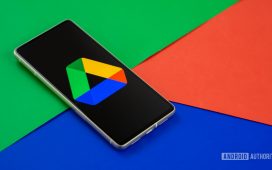Most of us have bad charging habits. I know I’ve left my phone plugged in overnight more times than I can count, which isn’t great for long-term battery health. Luckily, Google is tackling this issue with its latest charging-related feature.
Already, Android phones can limit juicing up to 80%. What’s different this time is that Google has introduced bypass charging alongside the charge limit. Once your phone’s battery hits that mark, the phone uses power directly from the charger instead of the battery if you stay plugged in. Here’s how it works.
A new way to save your phone’s battery
The existing charging limit feature reduces battery wear by stopping every Android phone user from reaching 100%, especially if you’re the type to plug in your phone and forget it. However, it doesn’t fully solve the problem of heating when using the phone while it’s plugged in. Even if you stop charging to 80%, the battery still powers the phone, generating heat and putting strain on it during heavy tasks.
Bypass charging goes a step further. Once your battery hits the limit, power flows directly to the phone instead of through the battery. So it becomes cooler and avoids unnecessary charge cycles, extending battery lifespan more effectively.
Google released the feature a week ago on December 5th. It came as part of this month’s Pixel Drop, alongside an improved Call Screen, Expressive Captions, and Dual Screen capabilities for the Pixel Fold phones.
Related: December Pixel Update: Bug Fixes, And Pixel 6 Lives Again
Bypass charging will only kick in at 80%
Now, you may be tempted to think that bypass charging works as easily as turning on a toggle button whenever you want. But that’s not the case here. Your phone will always reach 80% first, and only then does it start bypassing the battery.
Android Authority performed a test to see if Pixel phones support bypass charging when the regular limit is set. The test involved powering a Pixel 8 Pro with the “Limit to 80%” option enabled.
Once the phone reached that percentage, it displayed a “Done charging” message, and battery apps confirmed that charging had stopped, but the phone still recognized that a charger was connected.
When they checked the power draw from the phone’s USB-C port, there were erratic fluctuations because the phone was drawing power directly from the source instead of charging the battery.
When the phone was switched back to adaptive charging mode, the power draw increased, confirming that the phone was charging the battery again. It also confirms that Pixel phones do actually support bypass charging when the 80% limit is set.
Bypass charging is Pixel-exclusive… for now
Bypass charging on Android is something cool because you can use your phone while it’s plugged in for anything. I wrote this post on Google Docs while my phone was plugged in, so it’s something I’m really eager to see get a wider rollout.
For now, it’s only available to Pixel users, which is expected for a new feature drop. Google didn’t say which models support it exactly. But feel free to explore your settings for it once you receive the update.











